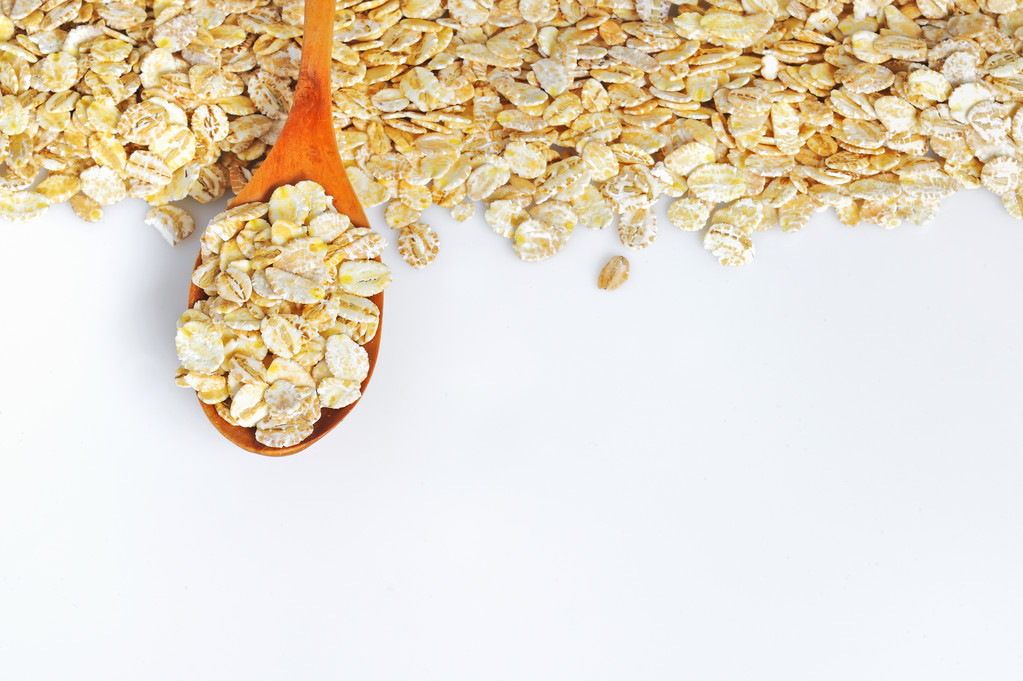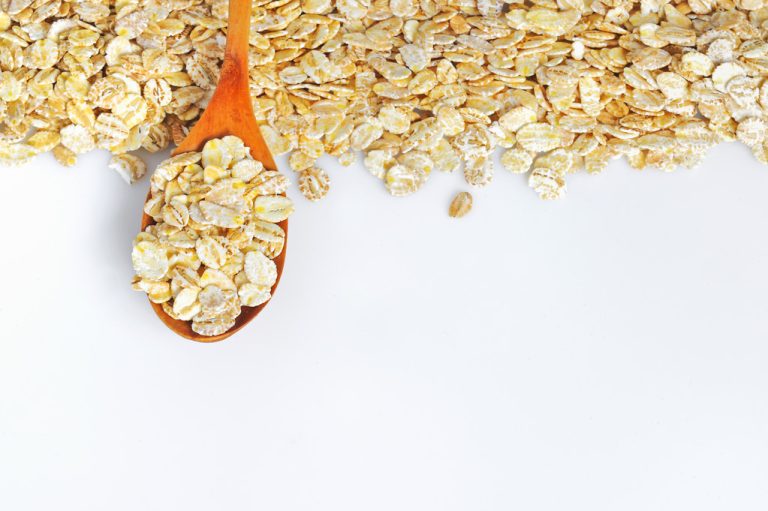Oatmeal is a true superfood, keeps you full for a long time and can help you lose weight. With this variant you can also boost fat burning.

Oatmeal is considered a superfood – why?
Oatmeal (Avena sativa) is tasty and versatile. As a low-gluten grain, they are also very trendy. They enhance your muesli, add the right bite to patties, can be baked into bread and rolls or provide sweet moments as delicious oatmeal biscuits. Despite their high calorie content, around 350 kilocalories per 100 grams, they can help you lose weight. In addition to the good taste, the crushed cereal grains also contain a lot of healthy nutrients such as fiber, vitamins and minerals.
These healthy ingredients are found in oats
Complex carbohydrates keep you full longer because our body needs more time to digest long-chain carbohydrates. As a result, stomach emptying is much slower and you feel full longer. In addition, the blood sugar level rises only slowly and less insulin is required.
Dietary fibers are largely indigestible food components that swell up in the stomach and bind water. Oatmeal contains about 10 grams of dietary fiber in the form of pectin and cellulose for every 100 grams. These serve as food for the beneficial intestinal bacteria. The German Society for Nutrition (DGE) recommends that adults consume at least 30 grams of fiber per day.
Beta-glucan is a soluble dietary fiber that forms a kind of protective film on the stomach and intestinal mucosa. Studies show that beta-glucan has a positive effect on cholesterol and blood sugar levels. The oat diet has also proven to be very effective for controlling blood sugar levels. The health-promoting properties of beta-glucans from oats and barley have been sufficiently proven in studies. Corresponding health claims (health-related information) have been approved by the European Commission and included in the positive list of permitted health-related information.
Minerals such as magnesium, phosphorus, iron and zinc, manganese and selenium provide the body with an extra portion of important micronutrients.
Vitamins, of which the high content of B vitamins stands out, support important body processes.
This is how oats become a fat burner
To boost your fat digestion, you should include oat bran in your diet, which consists only of parts of the whole oat grain. Oat bran consists of the oat seedling and the outer layers of the endosperm. It is more like a coarse, coarsely ground flour and has a slightly nutty taste. The benefits of oat bran are:
Oat bran contains 15 grams of fiber per 100 grams, which is 50% more fiber than the pressed whole grain oatmeal.
Oat bran also has fewer calories (240 to 330 kilocalories per 100 grams) than oatmeal.
Oat bran contains less fat than oatmeal.
Oat bran contains more beta-glucan than oatmeal.
Although oat bran doesn’t contain all of the oat grain, it has most of the vitamins, minerals, protein, and fiber of an oat grain, but fewer carbohydrates.
Oat bran is not very tasty on its own. But you can refine your muesli wonderfully with it. To increase the protein content here, it is best to combine oat bran with yoghurt, chia seeds or nuts. This automatically reduces the proportion of carbohydrates and you support fat burning. You can achieve an additional fat burner effect by adding spices such as ginger or cinnamon. If you also mix your oat bran muesli with water instead of milk, you save even more calories. But oat bran is also very valuable as a flour substitute when baking bread or biscuits and stirred into sauces.
Tips on buying and eating oatmeal and oat bran
Prefer organic quality: In addition to the health benefits, oat bran is also a very cheap food. Even in organic quality, oat bran remains affordable and long delivery routes are eliminated due to regional cultivation. The consumer magazine Öko-Test repeatedly finds impurities in oatmeal. In addition to glyphosate, these also include mold toxins, mineral oil and nickel. Among the oat flakes rated “very good” all of the first five places were organic products.
Increase fluid intake: Oat bran swells in the stomach, so it also increases stool volume and stimulates bowel movements. That’s why it’s very important that you drink enough fluids, otherwise constipation or, in the worst case, an intestinal blockage can occur.
Increase the amount slowly: You should also slowly get your body used to the higher fiber content, otherwise digestive problems such as flatulence can occur.
Be careful with digestive problems and allergies: If you suffer from swallowing problems or constrictions in the digestive tract, you should avoid oat bran.
If you are allergic to oats, eating oat bran is also not recommended.
If you suffer from celiac disease (gluten intolerance), you can use non-contaminated, gluten-free oats, which must be marked with the crossed-out ear of corn symbol.

